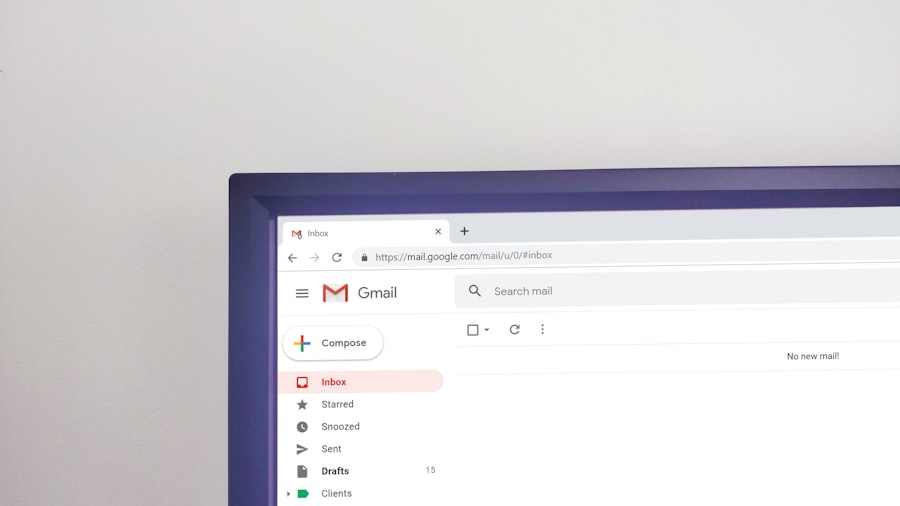To truly grasp the art of influence, you must first delve into the intricate workings of human psychology. At its core, influence is about understanding how people think, feel, and behave. It involves recognizing the underlying motivations that drive individuals to make decisions.
You may find that emotions often play a more significant role than logic in shaping opinions and actions. By tapping into these emotional triggers, you can effectively guide others toward your desired outcomes. Moreover, the principles of cognitive biases can be instrumental in your journey to becoming an influential figure.
For instance, the anchoring effect suggests that people tend to rely heavily on the first piece of information they encounter when making decisions. By strategically presenting information, you can set the stage for how others perceive subsequent data. Understanding these psychological nuances allows you to craft your messages in a way that resonates deeply with your audience, ultimately enhancing your ability to influence their thoughts and actions.
Key Takeaways
- Understanding the psychology of influence is crucial for effectively persuading others.
- Building rapport and trust is essential for gaining influence and getting others to listen to you.
- Leveraging social proof can help in influencing others by showing that others have already accepted your ideas or products.
- Using reciprocity to your advantage can create a sense of obligation in others to reciprocate your actions or favors.
- Creating authority and credibility is important for gaining influence and persuading others to follow your lead.
Building Rapport and Trust
Establishing rapport is a fundamental step in the process of influence. When you connect with others on a personal level, you create an environment where they feel comfortable and valued. This connection fosters trust, which is essential for any meaningful interaction.
To build rapport, consider mirroring body language or adopting a similar tone of voice. These subtle cues can signal to others that you are in sync with them, making them more receptive to your ideas. Trust is not built overnight; it requires consistent effort and authenticity.
You should strive to be transparent in your intentions and follow through on your commitments. When people see that you are genuine and reliable, they are more likely to open up to you and consider your perspective. Remember that trust is a two-way street; by demonstrating vulnerability and sharing your own experiences, you encourage others to do the same, further solidifying the bond between you.
Leveraging Social Proof

Social proof is a powerful psychological phenomenon that can significantly enhance your influence. People often look to others for guidance on how to behave or what to believe, especially in uncertain situations. By showcasing testimonials, case studies, or endorsements from respected figures, you can create a sense of validation for your ideas or products.
This not only boosts your credibility but also encourages others to follow suit. You can also leverage social proof by highlighting the popularity of your offerings. For instance, if you’re promoting a service or product that has garnered a substantial following or positive reviews, make sure to share those statistics.
When individuals see that others have made similar choices and found satisfaction, they are more likely to feel confident in their decision-making process. This collective behavior can create a snowball effect, where the more people engage with your idea, the more appealing it becomes to others.
Using Reciprocity to Your Advantage
| Reciprocity Strategy | Metrics |
|---|---|
| Offering help without expecting anything in return | Number of times help was offered |
| Building relationships based on mutual benefit | Number of successful collaborations |
| Expressing gratitude for received favors | Number of thank-you notes sent |
| Creating a positive reputation for being helpful | Number of referrals received |
Reciprocity is a principle rooted in social psychology that suggests people feel compelled to return favors or kindnesses. You can harness this powerful dynamic by offering something of value before asking for something in return. This could be as simple as providing helpful information, resources, or even a small gift.
When you extend goodwill, you create a sense of obligation in others, making them more inclined to reciprocate your generosity. However, it’s essential to approach reciprocity with sincerity. If your gestures come across as manipulative or insincere, they may backfire and damage your credibility.
Instead, focus on building genuine relationships where both parties feel valued and respected. By fostering an environment of mutual support, you not only enhance your influence but also cultivate lasting connections that can benefit both you and those around you.
Creating Authority and Credibility
Establishing yourself as an authority in your field is crucial for effective influence. People are more likely to be swayed by individuals they perceive as knowledgeable and credible. To build this authority, consider sharing your expertise through various channels such as blogs, podcasts, or public speaking engagements.
By consistently providing valuable insights and information, you position yourself as a trusted source within your domain. Additionally, credentials and experience play a significant role in establishing credibility. If you have relevant qualifications or have achieved notable success in your field, don’t hesitate to showcase these accomplishments.
However, remember that authority is not solely about titles; it’s also about how you communicate and connect with others. By being approachable and willing to engage in meaningful conversations, you can further solidify your status as an authority figure while remaining relatable.
Employing the Power of Persuasion

Persuasion is an art form that combines various techniques to sway opinions and drive action. One effective method is the use of storytelling. Humans are naturally drawn to narratives; they evoke emotions and create connections that facts alone cannot achieve.
When you share compelling stories that illustrate your points, you engage your audience on a deeper level, making them more receptive to your message. Another powerful persuasive technique is the use of scarcity and urgency. When people perceive something as limited or time-sensitive, they are more likely to act quickly out of fear of missing out.
You can create this sense of urgency by highlighting limited-time offers or exclusive opportunities. However, it’s crucial to use this tactic ethically; misleading claims can damage your reputation and erode trust over time.
Navigating Social Dynamics and Group Behavior
Understanding social dynamics is essential for effective influence, especially when dealing with groups. People often conform to group norms and behaviors, which can either work in your favor or against it. To navigate these dynamics successfully, observe the group’s interactions and identify key influencers within it.
By aligning yourself with these individuals or addressing their concerns directly, you can enhance your chances of swaying the entire group. Additionally, fostering a sense of belonging within the group can amplify your influence. When individuals feel connected to a community or shared purpose, they are more likely to embrace new ideas or changes.
You can facilitate this sense of belonging by encouraging collaboration and open dialogue among group members. By creating an inclusive environment where everyone feels heard and valued, you increase the likelihood of gaining support for your initiatives.
Ethical Considerations in Social Hacking
As you explore the various techniques for influence and persuasion, it’s vital to remain mindful of ethical considerations. Social hacking—using psychological principles to influence behavior—can easily cross ethical boundaries if not approached responsibly. Manipulating individuals for personal gain or exploiting their vulnerabilities undermines trust and can have long-lasting negative consequences.
To maintain ethical integrity in your efforts, prioritize transparency and respect for others’ autonomy. Ensure that your intentions are aligned with the well-being of those you seek to influence. By fostering genuine relationships built on trust and mutual respect, you not only enhance your influence but also contribute positively to the social fabric around you.
Ultimately, ethical considerations should guide your actions as you navigate the complex landscape of human behavior and influence. In conclusion, mastering the art of influence requires a deep understanding of human psychology and social dynamics. By building rapport and trust, leveraging social proof, utilizing reciprocity, establishing authority, employing persuasive techniques, navigating group behavior, and adhering to ethical standards, you can become a powerful influencer while fostering positive relationships with those around you.
Your journey toward becoming an influential figure is not just about achieving personal goals; it’s about creating meaningful connections that enrich both your life and the lives of others.
If you’re interested in learning more about social hacking techniques and how they can impact critical infrastructure, I recommend reading an insightful article on Cybersecurity Decoder. The article delves into various strategies employed by hackers to manipulate or deceive individuals into giving away confidential information, which can then be used to gain unauthorized access to systems. This is particularly relevant for those involved in securing critical infrastructures. You can read the full article by following this link: Exploring Social Hacking Techniques in Critical Infrastructure Security.
FAQs
What are social hacking techniques?
Social hacking techniques are methods used by individuals to manipulate and deceive others into divulging confidential information or performing actions that may compromise security.
What are some common social hacking techniques?
Common social hacking techniques include phishing, pretexting, baiting, tailgating, and quid pro quo. These techniques often involve exploiting human psychology and trust to gain access to sensitive information or systems.
How can individuals protect themselves from social hacking techniques?
Individuals can protect themselves from social hacking techniques by being cautious of unsolicited requests for information, verifying the identity of individuals requesting sensitive information, and being mindful of the information they share online and in person.
What are the potential consequences of falling victim to social hacking techniques?
The potential consequences of falling victim to social hacking techniques include identity theft, financial loss, unauthorized access to personal or corporate data, and damage to reputation or relationships.
How can organizations protect themselves from social hacking techniques?
Organizations can protect themselves from social hacking techniques by implementing security awareness training, establishing clear policies and procedures for handling sensitive information, and regularly conducting security audits and assessments. Additionally, organizations can utilize technology solutions such as firewalls, encryption, and multi-factor authentication to enhance security.



